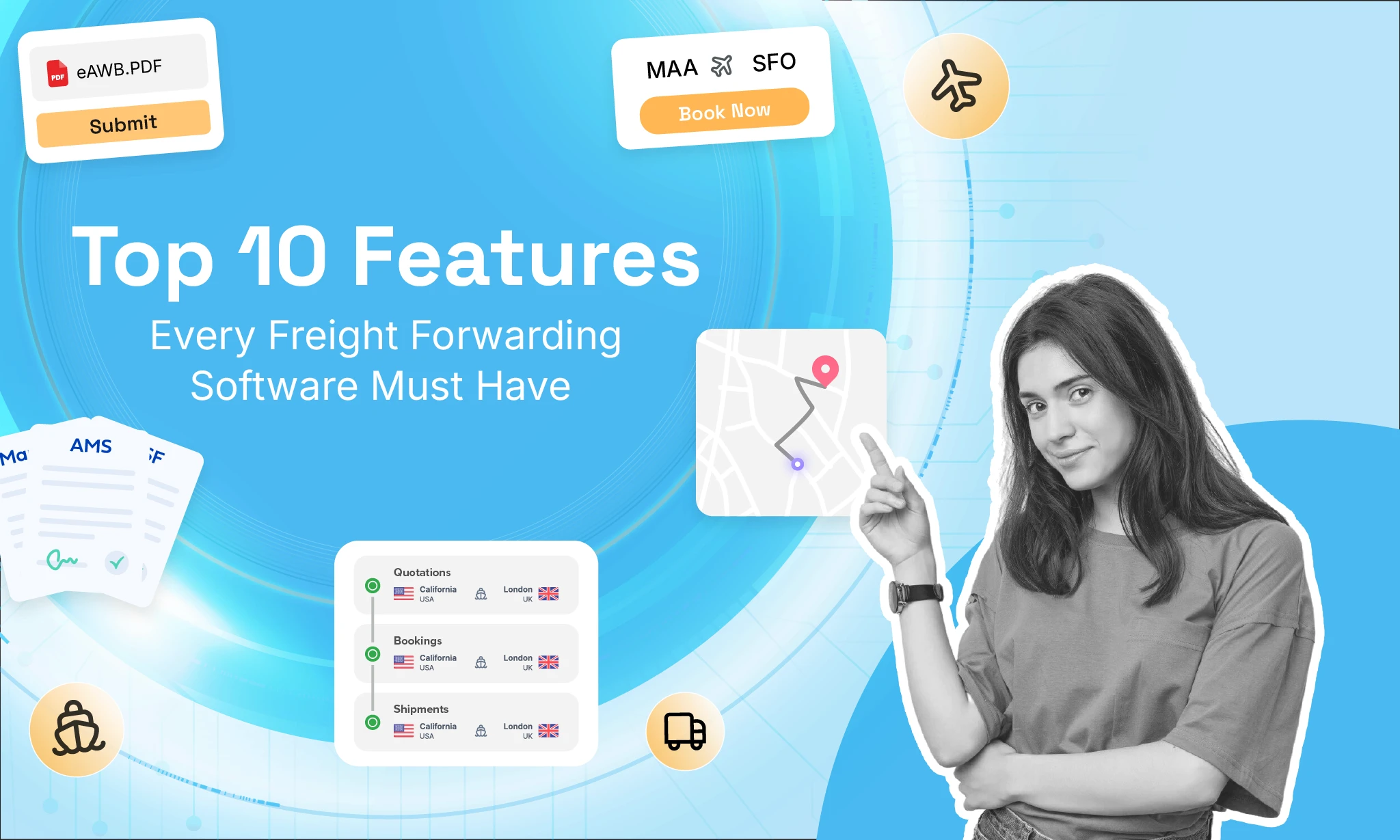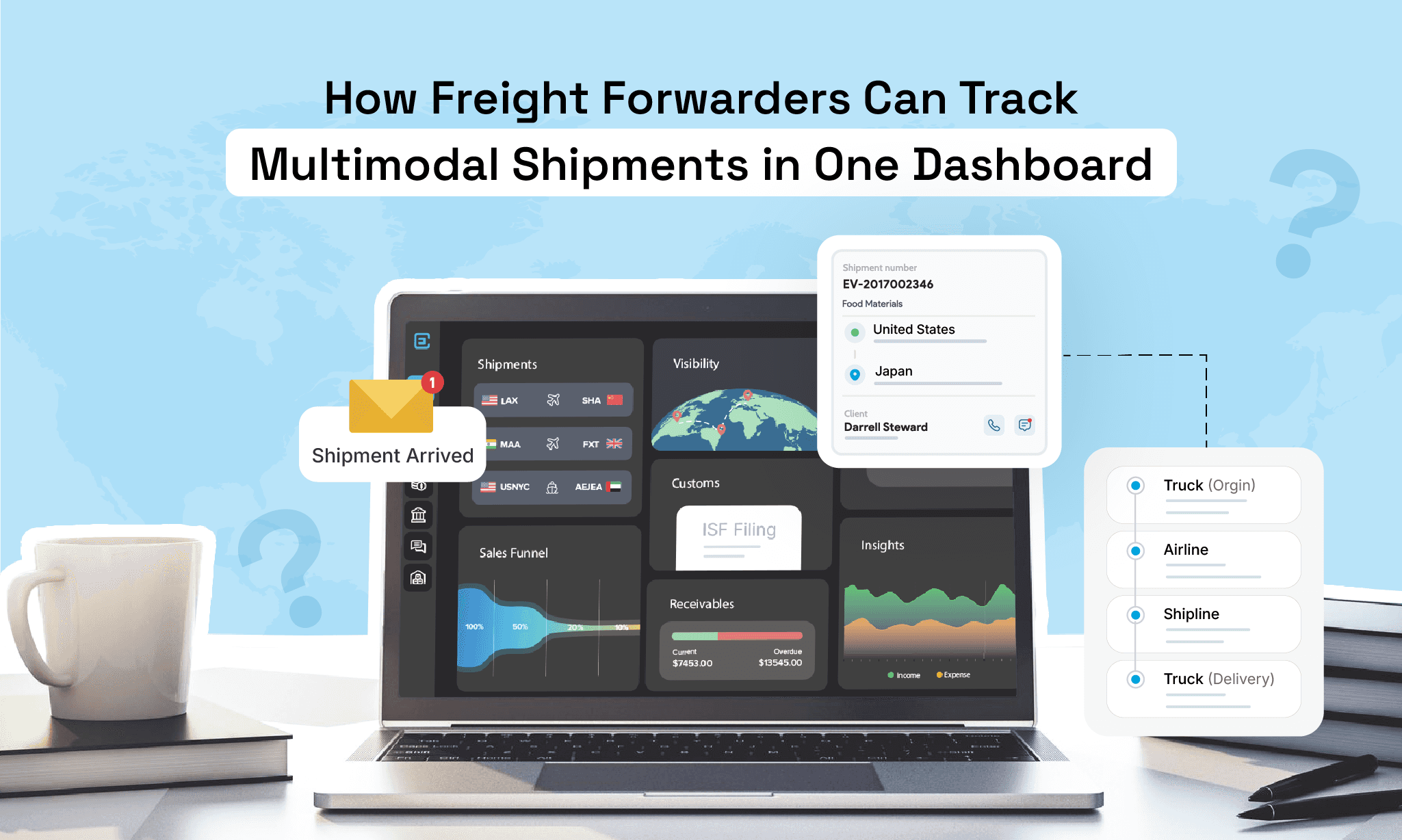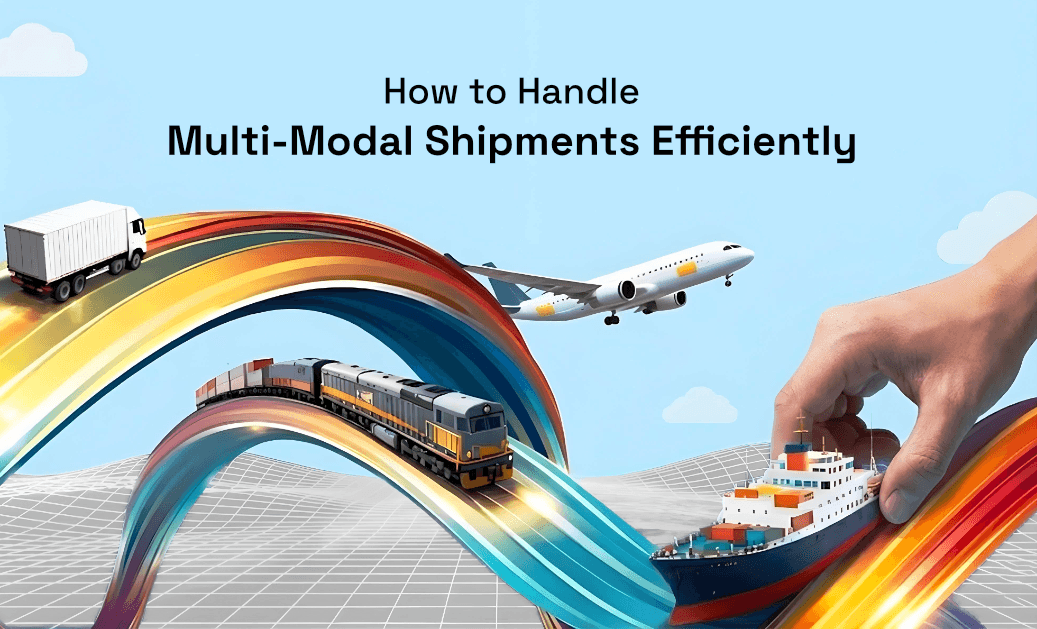e-AWB vs Paper AWB: Which Saves More Time & Costs in 2025?
Author:
Divya Murugan
Published On:
Jun 9, 2025
1 min read
Let me ask you something.
When was the last time a paper airwaybill actually helped your workflow?
No, really. Think about it.
Did it speed things up?
Did it help your team breathe easier? Or was it just one more form to print, sign, scan, send, correct, courier… you get the picture.
Relying on paper documents in modern air cargo workflows is inefficient and outdated, especially when digital solutions are available.
In 2025, we’re still using paper for international air cargo? With all the digital tools we have now?
Something’s off.
Key Takeaways
Paper AWBs waste time, money, and patience in 2025.
e-AWB offers faster processing, fewer errors, and no courier delays.
Digital workflows improve tracking, compliance, and team focus.
It’s not just an upgrade, it’s the new air cargo standard.
Introduction to Air Freight

The air cargo industry is the backbone of global trade, moving everything from electronics to pharmaceuticals across continents in record time. Freight forwarders and air carriers are at the heart of this fast-paced world, working together to ensure that goods reach their destinations quickly and safely. Air freight is especially crucial for high-value and time-sensitive shipments, making it a preferred choice for businesses that can’t afford delays.
Behind every successful air cargo shipment is a well-orchestrated process involving a network of logistics service providers, ground handling agents, and customs brokers. Each party plays a specific role, from preparing shipments and handling transport documents to ensuring smooth customs clearance. The air freight process is a finely tuned operation, where timing and accuracy are everything.
In recent years, the adoption of electronic data and electronic data interchange (EDI) has revolutionized air cargo operations. By enabling instant, secure communication between all parties, EDI reduces paperwork, minimizes errors, and speeds up the entire air cargo process. As the industry continues to evolve, digital solutions are becoming the new standard for efficient, reliable air freight.
Why Paper AWBs Slow You Down

I remember walking into a freight forwarder’s office last year. The ops floor looked like a mini warzone—paper everywhere, courier boys buzzing in and out, printers overheating. One poor guy was trying to reprint an air waybill because the airline rejected the earlier one due to a missing signature. Manual document processing like this leads to delays and inefficiencies, slowing down air freight offices and making operations more error-prone.
It wasn’t even 11 AM, and you could already tell—this day was going to drag.
Now flip to another office down the street. Same industry. Same workload. But here’s the difference—they’d switched to electronic air waybills a few months earlier. The air felt different. Calmer. Focused. They weren’t chasing paper—they were tracking cargo.
Paper AWB vs e-AWB: A Side-by-Side Comparison

Paper Air Waybill (PAWB)
Printed document.
Signed manually.
Physically couriered.
Prone to errors, delays, damage.
May incur additional carrier fees due to manual processing and courier services.
Electronic Air Waybill (e-AWB)
Created and shared digitally using air waybill software.
Sent directly to the airline system.
Real-time validation.
Stored securely in the cloud.
Increases processing speed, enabling faster transmission, customs clearance, and overall cargo handling.
Helps avoid carrier fees associated with paper documentation, reducing shipping costs.
It’s not even a fair fight anymore. One belongs to the past. The other is clearly the future.
Types of Air Waybills

In the air cargo industry, not all air waybills are created equal. Understanding the different types is essential for freight forwarders, air carriers, and anyone involved in moving goods by air.
The Master Air Waybill (MAWB) is the primary document issued by the airline or its agent, serving as the contract of carriage for the entire shipment. It outlines the terms and conditions under which the goods are transported and provides legal protection for both the shipper and the carrier.
The House Air Waybill (HAWB), on the other hand, is issued by a freight forwarder to their customer. It acts as an internal document, detailing the forwarder’s own terms and conditions for the shipment. The HAWB is especially important when consolidating multiple shipments under a single MAWB, ensuring each party’s interests are clearly defined.
Another key document is the Electronic Consignment Security Declaration (eCSD), a regulatory document that certifies the security status of the cargo. The eCSD guarantees that only secure goods are loaded onto aircraft, helping air carriers and freight forwarders comply with international security standards.
By using the right type of air waybill for each situation, stakeholders in the air cargo industry can ensure smooth, compliant, and secure shipments every time.
Behind the Scenes of Air Cargo Operations Workflow

Air cargo operations are a complex dance of coordination and timing, involving multiple stakeholders working together to move goods across the globe. Freight forwarders kick off the process by preparing essential transport documents, including the air waybill, which acts as the shipment’s passport throughout its journey.
Once the paperwork is ready, ground handling agents take over, managing the physical movement of cargo at the airport. Air carriers then transport the goods, while customs brokers handle the intricacies of customs clearance, ensuring all regulatory requirements are met.
Throughout the air cargo process, cargo tracking and shipment tracking are vital for keeping everyone informed and minimizing delays. The shift from manual processes to digital processes—like electronic data interchange (EDI)—has been a game changer. EDI allows for the seamless exchange of electronic data between parties, reducing errors, improving data quality, and speeding up every step of the workflow.
By embracing digital solutions, the air cargo industry is able to deliver faster, more reliable service, making international trade smoother for everyone involved.
How Much Time Are You Losing with Paper AWBs?

You’d be surprised how much time vanishes into handling paperwork. Here’s a rough breakdown for one AWB:
Print, review, and sign: 10–15 minutes
Courier to airline or agent: 1–2 hours depending on traffic
Fixing mistakes: another 20–30 minutes
Physical filing or scanning: 10 minutes
These manual processes not only waste time but also increase overall transportation costs for air freight shipments.
Multiply that by 10–20 shipments a day. That’s half your ops team tied up in admin instead of value-added work.
e-AWB in Action: Insights from Freight Forwarders
Based on conversations with multiple mid-sized freight forwarding companies adopting e-AWB in 2025, some common benefits have emerged:
Here’s what they found:
Metric | Paper AWB | e-AWB |
|---|---|---|
Avg. processing time | 2–3 hours | 10–15 minutes |
Weekly courier costs | ~$500 | $0 |
Error rate | High | Very low (system checks, improved accuracy) |
Customer complaints | Regular | Almost none |
While switching to e-AWB may come with a brief learning curve, the overall efficiency gains are clear. Teams can access shipment data instantly, reducing delays and freeing up time to focus on exception handling and proactive customer communication.
Customs Clearance and e-AWB Contact

Customs clearance is one of the most critical—and often most challenging—steps in the air cargo process. Every shipment must be accompanied by accurate customs documents, and duties and taxes must be paid before goods can cross international borders. Traditionally, this step has been bogged down by manual processes, leading to delays and errors.
Enter electronic air waybills (e-AWBs). By digitizing the air waybill, freight forwarders and air carriers can instantly share precise information with customs authorities, reducing paperwork and improving data accuracy. e-AWBs streamline the customs clearance process, making it easier to comply with the regulatory framework set by governments worldwide.
Establishing e-AWB contact between all parties—freight forwarders, air carriers, customs brokers, and customs authorities—is essential for a smooth, paperless solution. With electronic air, data flows seamlessly, ensuring that customs regulations are met and shipments move quickly through clearance.
In 2025, using e-AWBs isn’t just about saving time—it’s about staying compliant, reducing risk, and keeping your air cargo operations running at peak efficiency.
When I Realized e-AWB Is the Future
I’ll be honest. I used to be skeptical about e-AWB. I thought—“Too complicated. Our clients won’t get on board. Airlines will still want paper.”
But here’s the reality in 2025: Airlines prefer e-AWB now.Most customs systems do too. And guess what? Your clients love faster updates and fewer errors. e-AWB enables real time tracking, giving your clients up-to-date shipment status at every stage.
One day I was sipping tea outside a terminal in Mumbai, watching a junior exec scramble to deliver a paper AWB. The other team—on e-AWB—was already done and packing up.
That’s when it hit me: we’re not choosing between tools. We’re choosing between chaos and clarity.
Why e-AWB Outperforms Paper AWB in Every Way

Real-time sharing: No waiting for couriers or email attachments.
Automatic validation: No guesswork about field formats or missing info.
Cloud storage: Easy access later—no digging through files.
Cleaner audits: Everything’s tracked. Everything’s timestamped.
Customer trust: Faster, smoother communication.
High quality data: Ensures accurate, reliable, and well-structured information, reducing errors and improving compliance.
Streamlined logistics operations: Optimizes processes and enhances efficiency across the entire supply chain.
And of course—less paper, less waste.
But What About Challenges?

Yes, change is hard.
Your team will need training. A well-planned e-AWB implementation is essential for successful adoption and to ensure compliance with industry standards. Air freight agents are among the key stakeholders who benefit from the transition to e-AWB, as it improves accuracy and speeds up processing. Some partners may resist at first. Implementing e-AWB can also simplify operations, even when managing cargo shipments across multiple airlines, by streamlining communication and standardizing processes. And you’ll need a solid, user-friendly air waybill software to make it work.
But here’s what’s harder: Losing shipments, redoing paperwork, or worse—watching your competition get ahead while you’re stuck in the past.
Final Thoughts
e-AWB isn’t a trend—it’s the new standard for air cargo shipments and the shipping process. In 2025, going digital isn’t optional anymore. It’s essential. The e-AWB is especially beneficial for managing international shipments efficiently and ensuring compliance with global regulations.
If you’re still on the fence, start small. Try it on one route. Train one team. Track the time saved.
You’ll be surprised how quickly it pays off—not just in hours, but in sanity.
Ask yourself this: Are we in the cargo business or the printing business?
If you chose the first one, it’s time to go digital.
Frequently Asked Questions (FAQs)
1. What is e-AWB?
An e-AWB is the electronic version of the traditional paper air waybill. It’s created and shared digitally, making shipment processing faster and more accurate.
2. Does e-AWB save time?
Yes, by eliminating printing, courier delays, and manual errors, e-AWB speeds up communication and cargo handling significantly.
3. Is it hard for small forwarders to switch?
Not really. Today’s air waybill software is user-friendly and integrates smoothly with airline systems, making adoption quick and easy.
4. Are there any drawbacks?
Some countries or carriers still require paper documents, and good internet is essential. Special shipments might also need extra paperwork.
5. How does e-AWB benefit sustainability and costs?
It reduces paper use and printing expenses, lowers error-related penalties, and speeds up cargo release, saving money while supporting eco-friendly practices.
Don't forget to share this blog!



